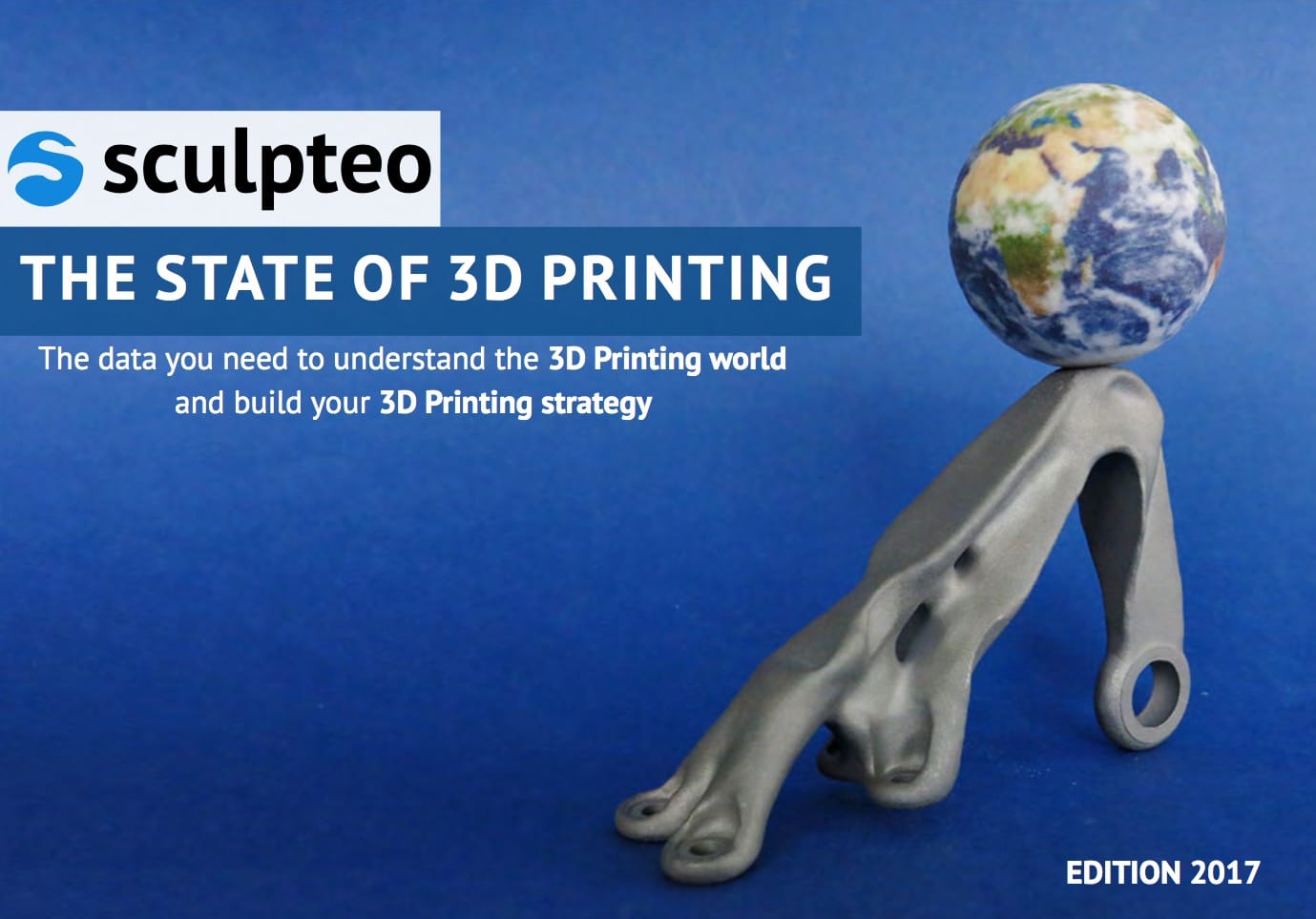
Each year Sculpteo performs an interesting survey of the 3D printing community and the results this year show some interesting trends.
The final report, entitled, “The State of 3D Printing, Edition 2017”, includes answers from over 900 respondents, each involved in 3D printing in some way. Their demographic analysis shows a slight tip towards European respondents over American, but this is consistent with what we see with our own audience.
Here are my observations as I read through the long report:
Sculpteo says the market is maturing, and I agree, based on what appears in the report. There is a significant focus on what might be called the “traditional” 3D printing activity, prototyping. That’s been going on for many years now, and it still dominates usage.
That said, the survey reports 90+% of respondents feel 3D printing provides them with a “competitive advantage” and “accelerating product development” is the highest priority. Based on the above, I take that to mean that “prototyping with 3D printing” provides a competitive advantage.
How much prototyping is done? In the report, “prototyping” and “proof of concept” take up 57% of usage, and everything except “production” is 78% of applications. So production applications are still quite low, but increasing.
However, the departmental usage shows 40% of production departments are using 3D printing. How can that be if the production application is only 22%? I suspect it is because production departments are using 3D printing for the making of jigs and fixtures to assist the production of end-products, not making end-products themselves with 3D printing.
Metal 3D printing occupies only 28% of materials used, but I suspect this will dramatically increase in coming years as new metal technologies come online. Plastics dominate usage (88%) as they have in previous years.
Finishing techniques are dominated by polishing and painting, which are used by 52% of respondents. All other finishing processes are less than 10% each and are all mechanical processes such as grinding or milling. Chemical finishing processes seem to be nearly absent, as they must be hidden in the “other” 6% category.
The usage of metals was quite surprising to me. Evidently the “most recommended metal” was aluminum, at 62%! Stainless steel was second at 22% and titanium, a metal that I would have thought was more popular, is only rated at 8%. It may be that the lightweight aluminum metal is frequently used in aerospace over titanium due to cost and the prevalence of non-flight-critical usage parts.
The majority of respondents have been using 3D printing for less than five years (86%), while oldsters using it for more than 11 years tally only 6%. This shows the tremendous growth of this industry within the last five years.
It seems that respondents really wish for additional price declines in order to grow the industry. This is something I strongly agree with, as all activities must be financially feasible. Just because you CAN do something doesn’t mean you SHOULD do it. It must make financial sense to do so.
This answer implies that respondents are well aware of additional ways to leverage 3D printing – but they are prevented from doing so because it is currently too expensive.
The deeper implication is that 3D printer manufacturers may have a vastly larger hidden market that could be unleashed if only prices were lower.
The one key statistic from this report that ties it all together is that the return on investment by using 3D printing has increased from 40% to 47% this year. This means there is a substantial group of users who are benefiting and even growing their value through 3D printing. From this we can predict that the industry will continue to grow as others catch the 3D print train to the future.
There’s a great deal more so I strongly encourage you to review the survey from Sculpteo.
Via Sculpteo

